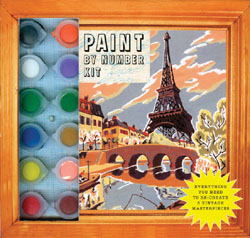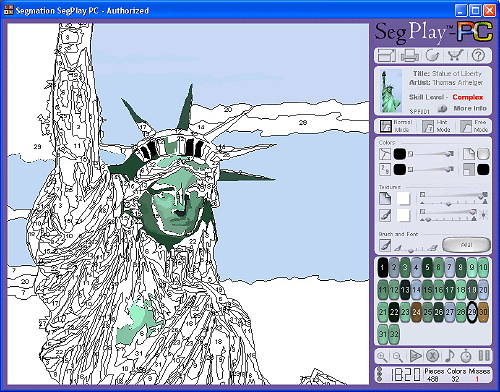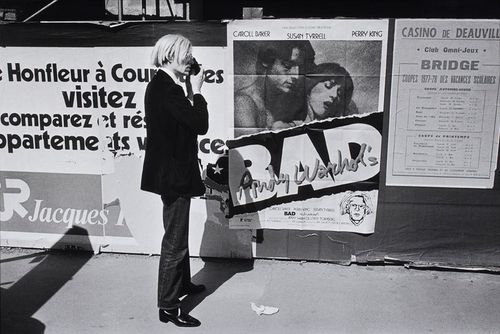JF Ptak Science Books LLC Post 740 Blog Bookstore
I wonder if Mr. Billy Collins has ever approached the
ineffable connection between paint-by-number art and Andy Warhol? It seems that paint-by-number (PBN) came from
nearly nowhere, a near state of being nowhere and nothing, just after WWII, to
the point of selling millions of sets by 1952.

It was an astonishing thing, really, how the PBN craze took over America. And it just so happens that 1952 was the
first one-man show for Andy Warhol, and was also the beginnings of the Pop Art
movement, which seems to me a rush to the most common denominator trough the commoditization
of consumerism and popular culture, creating art out of visible
nothingness. Warhol in particular
trained his sites on images that were already twisted around people’s neurons
and living in their memories. Art was
made from images injected into the heads of consumer buying units, a delightful
confusion of imagination and the already imagined, a reaction to a familiar sub
rosa advertised image.
Perhaps Warhol’s art was part of a larger whole, an
illustrator to a bigger point, a performance unintended to stand alone. But that is what happened, the art separated
from the wider message, and soared to great acclaim.

Warhol seems more like a paint-by-number color memorist,
filling in the blanks of an already-mostly-formed memory burned into the long
term memory via years of advertising and severe repetition. Nearly the entire broadcast industry was
created to support this memory-making process:
Seinfeld, Spongebob, The Office, Your Show of Shows, and all the rest,
created not necessarily for your pleasure but as a series of interchangeable 11-minute-long placeholders
to hold the viewer/listener to the point where they would be exposed to 180
seconds of product identification. It is
the repetitious memory formation that the folks depended upon so that when you
go down the supermarket aisle looking for an 89-cent can of tomato squeezings
called “soup” that the 799 exposures to the Campbell Soup Company’s product
line will direct you their way, a primitive bit of biological programming. And for all of the trimmings and
philosophical-critical digressions, Warhol capitalized on creating art on vast
shared memories, coloring in a shared image, reaching into the minds of
millions for something that everyone could see and understand—and not have to
think about, not lose one neuron in interpretation, and enjoy it like an comfy
old slipper.

Where Warhol succeeds and PBN fails is at the art/appreciation
point—few people took the PBN seriously as an art form, mainly because it wasn’t
presented as such, except for those who somehow took the thing too seriously.
Warhol took his creations seriously from the very beginning—and perhaps there
was really nothing more than the defense of his art that was the art
itself. It just seems to me that, in the
history of art, it tool 1500 years or so for linear perspective to be
rediscovered, another 500-odd years beyond that to bend and mystify nature in
the form of Impressionism, and another 30 years to lose all recognizable
natural forms all together. And then after
Braque and Duchamp and Kandinsky and the Blaue Reiter, and the Fauvism,
Suprematism, Vorticism, Dadaism, Deco, De Stijl, Surrelaism, Concrete art,
Abstract Impressionism, and on and on, that after all of this since Nude
Descending, that we are lead to Pop Art and silkscreens of soup cans. It just seems to me to be more about the
packaging than the package, which might just well be a wrapped bit of
nothing.






Comments